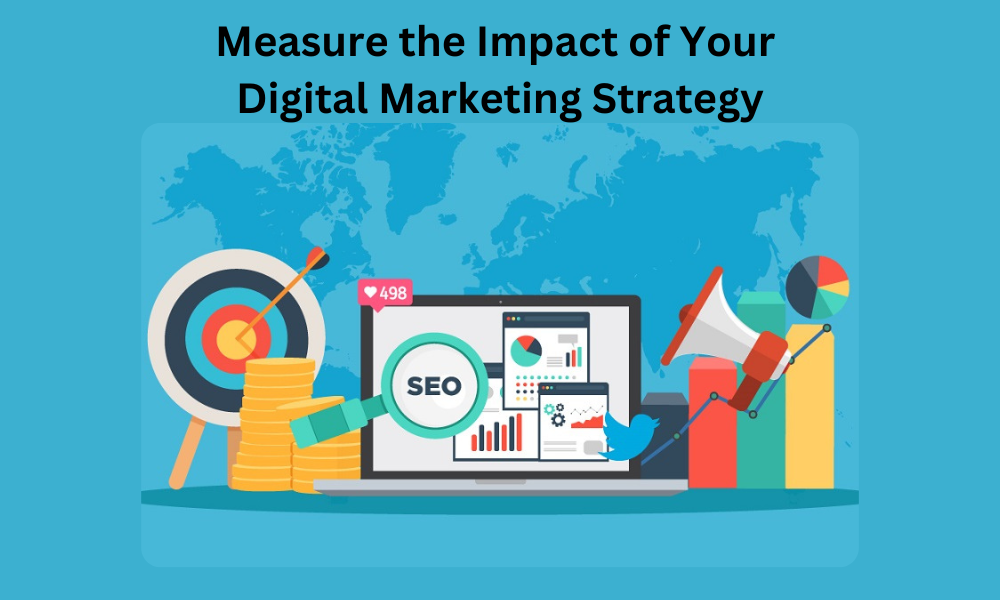In the fast-paced world of digital marketing, measuring the impact of your Digital Marketing strategy is crucial for success. Understanding how to quantify your efforts not only helps you identify what’s working but also guides you in making informed decisions for future campaigns.
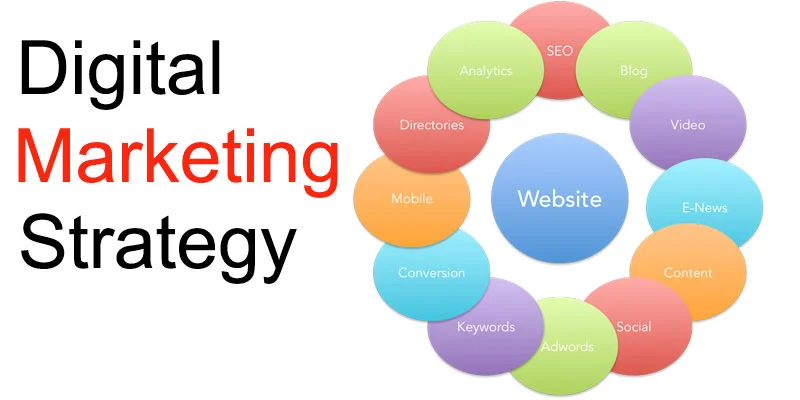
This blog will explore various methods and metrics you can use to measure the impact of your digital marketing strategy effectively.
Set Clear Goals and Objectives
Before you can measure the impact of your digital marketing strategy, it’s essential to establish clear, measurable goals and objectives. Use the SMART criteria to ensure your goals are Specific, Measurable, Achievable, Relevant, and Time-bound. Examples of digital marketing goals might include:

- Increasing website traffic by 30% over six months
- Generating 500 new leads within three months
- Boosting conversion rates by 20% in the next quarter
Utilize Analytics Tools
Analytics tools are invaluable for measuring the impact of your digital marketing efforts. Here are some popular tools:
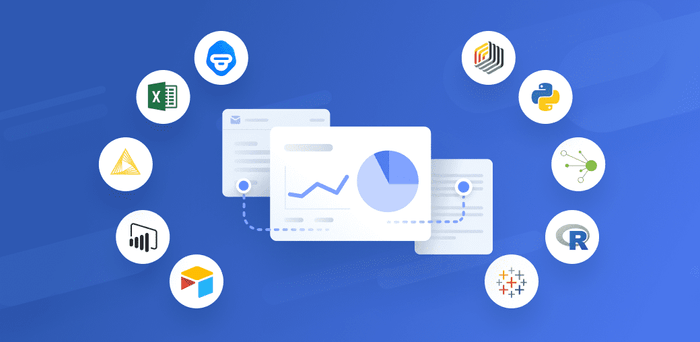
- Google Analytics: Track website traffic, user behavior, conversion rates, and more. Set up goals to measure specific actions, such as downloads or purchases.
- Social Media Analytics: Platforms like Facebook, Instagram, and Twitter offer insights into engagement, reach, and demographic information about your audience.
- Email Marketing Metrics: Tools like Mailchimp or Constant Contact provide metrics on open rates, click-through rates, and conversions for your email campaigns.
Track Key Performance Indicators (KPIs)
Identify and track KPIs that align with your goals. Some common KPIs for digital marketing include:

| KPI | Description | Importance |
| Website Traffic | Measures the number of visitors to your site over a specific period. | Helps assess the effectiveness of marketing campaigns and content strategies. |
| Tracks traffic sources to identify which channels are most effective (organic, paid, social media). | Enables optimization of marketing efforts based on performance data. | |
| Higher traffic can indicate greater brand awareness and interest in your offerings. | Provides insights into user behavior and preferences, guiding content and marketing tactics. | |
| Conversion Rate | The percentage of visitors who complete a desired action (e.g., purchase, sign-up). | Indicates the effectiveness of your website and marketing campaigns in driving desired actions. |
| A higher conversion rate suggests that your messaging and user experience are resonating with visitors. | Helps identify areas for improvement in user experience and sales funnels. | |
| Tracking conversion rates allows for testing and optimization of different strategies. | Supports data-driven decision-making for better resource allocation and marketing focus. | |
| Customer Acquisition Cost (CAC) | Calculates the total cost associated with acquiring a new customer, including marketing and sales expenses. | Provides insights into the efficiency of your marketing strategies and resource allocation. |
| A lower CAC indicates more effective marketing efforts, leading to better profitability. | Helps evaluate the sustainability of your growth and pricing strategies. | |
| Understanding CAC helps businesses make informed decisions | Aids in determining the long-term value of customers acquired through specific channels. | |
| Return on Investment (ROI) | Measures the revenue generated from digital marketing efforts compared to the costs incurred. | Essential for assessing the profitability of marketing campaigns and strategies. |
| A positive ROI indicates successful marketing investments. | Enables prioritization of high-performing channels and tactics for future campaigns. | |
| Tracking ROI helps businesses understand their overall marketing effectiveness. | Supports long-term strategic planning based on past performance. |
Analyze User Behavior
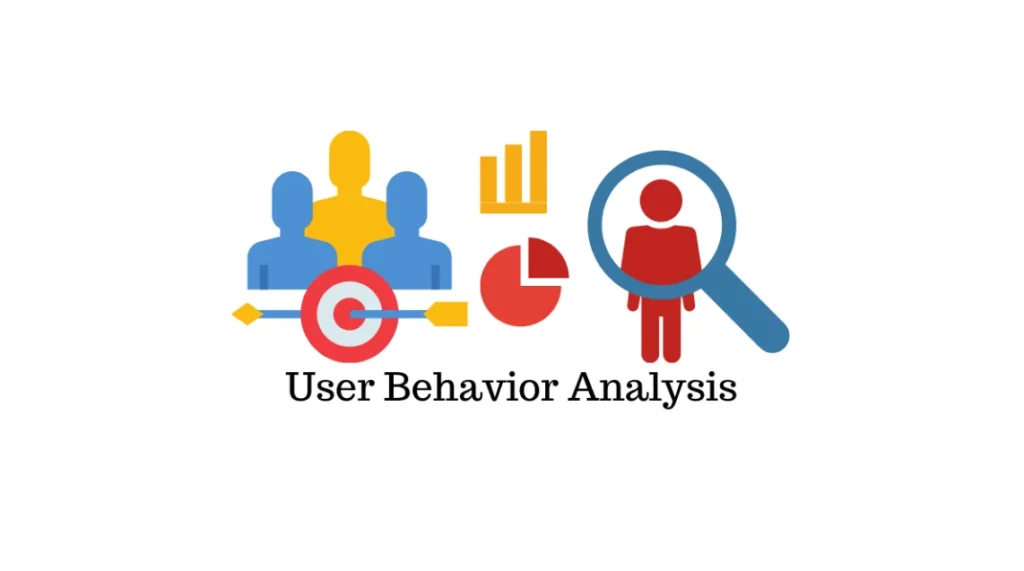
Understanding how users interact with your website or social media platforms can provide insights into the effectiveness of your strategies. Use tools like Hotjar or Crazy Egg to analyze user behavior through heatmaps, session recordings, and conversion funnels. This information can help you identify areas for improvement and optimize user experience.
A/B Testing
Conduct A/B testing to compare two versions of a marketing element (e.g., email subject lines, landing pages, ad copy) and determine which performs better. By testing different approaches, you can optimize your strategies based on real data and make informed decisions.
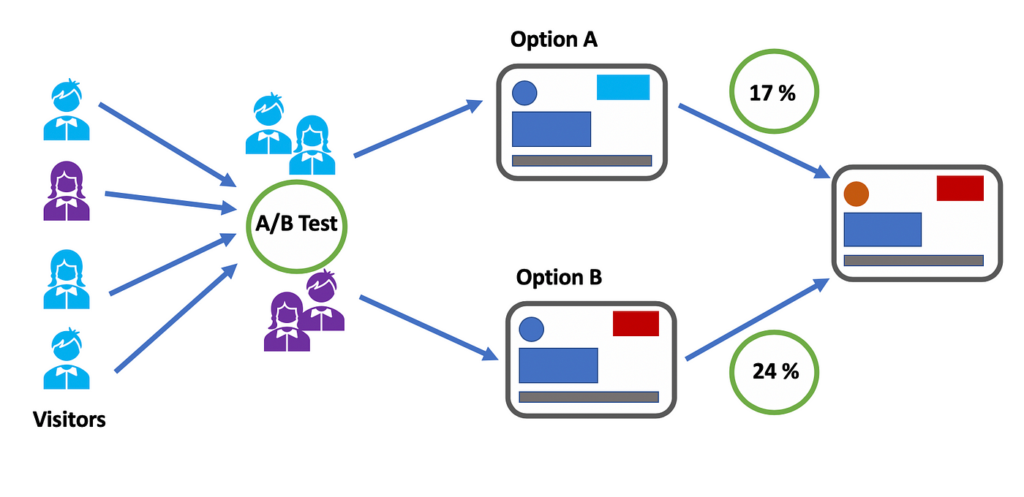
Definition and Purpose
A/B testing involves comparing two versions of a marketing element to see which performs better. It allows marketers to make data-driven decisions by testing different variables. The goal is to optimize marketing strategies to increase effectiveness and engagement.
Elements to Test
Common elements to test include email subject lines, landing page designs, ad copy, and call-to-action buttons. Variations can include different headlines, images, layouts, or color schemes. Testing multiple elements simultaneously can help identify the best-performing combinations.
Process of A/B Testing
Define the goal of the test (e.g., increased click-through rates, higher conversions). Randomly split your audience into two groups: one receives Version A, and the other receives Version B. Collect and analyze data on user interactions to determine which version performed better.
Gather Customer Feedback
Engage with your audience and gather feedback through surveys, reviews, and social media interactions. Understanding customer perceptions of your brand and marketing efforts can provide valuable insights into what resonates with your target audience.
Conclusion
Measuring the impact of your digital marketing strategy is essential for ongoing improvement and success. By setting clear goals, utilizing analytics tools, tracking key performance indicators, analyzing user behavior, conducting A/B testing, and gathering customer feedback, you can gain a comprehensive understanding of your marketing efforts’ effectiveness. Regularly assessing your strategy will help you refine your approach, increase ROI, and ultimately achieve your business objectives.
Read more : How To Boost Your Digital Marketing Strategy
FAQs
It’s recommended to review your digital marketing metrics monthly. However, for larger campaigns or during significant changes, you may want to assess performance weekly.
Conversion rates can vary by industry, but a common benchmark is between 2% to 5%. Strive for continuous improvement by testing and optimizing your strategies.
To enhance your digital marketing ROI, focus on targeting the right audience, optimizing your campaigns based on data analysis, and refining your messaging to increase engagement.
Some useful tools include Google Analytics, SEMrush, HubSpot, Mailchimp, and social media analytics platforms.

Alex Mitch
Welcome to my blog! With over 10 years in digital marketing , I’ve seen its incredible impact on smaller businesses. Join me as we explore how digital marketing can grow your audience and boost your business. Whether you’re an experienced entrepreneur or just starting out, you’ll find practical tips and insights to enhance your digital marketing strategies.


